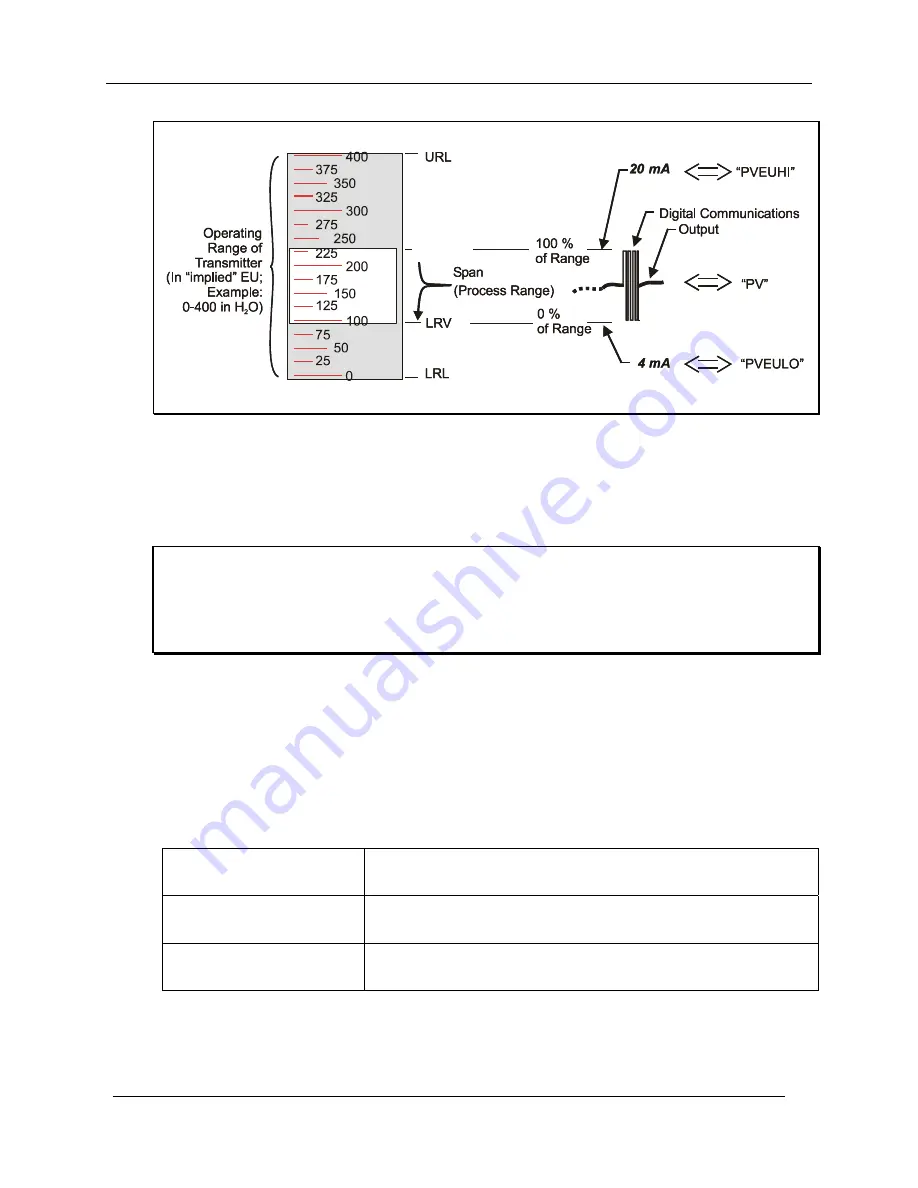
Transmitter/Communications Characteristics
Page 6
34-ST-25-20 MC Toolkit User Manual
Release 3
9/06
URV
URV
Figure 4 Honeywell Analog Value Scaling
Digital (Communications Signal) Input/Output
As indicated at the right of Figure 4, communications between the MC Toolkit and the Honeywell Smart
Transmitter consist of digital pulse strings, with rapid transitions of current level between (approximately)
4 mA and 20 mA.
Caution:
These rapid transitions provide for effective communications, but will interfere adversely with a transmitter
operating on-line in a control loop.
The MC Toolkit communicates digitally; exercise caution and good judgment when connecting the unit to
an on-line transmitter operating in the analog mode.
Honeywell Transmitter Output - Digital Enhanced Mode
Most of the operation of the Honeywell Smart Pressure Transmitter Digital Enhanced (DE) mode is similar
to that of operation in the analog mode. The essential characteristics of operation in DE mode are shown in
Figure 5.
As indicated at the right of Figure 5, output values of process variables, as well as digital communications,
are transferred to a receiving device digitally. The digital coding is Honeywell proprietary, which requires
the use of DE-capable Honeywell control equipment.
The use of DE mode offers several advantages:
process safety
Unlike in the analog mode, communications devices do not "bump" the
value of the PV.
accuracy is retained with less
maintenance
Digital communications are relatively immune to small variations in
circuit resistance or supply voltage.
facilitates maintenance tasks
Honeywell control systems include operating displays that enable direct
communication with transmitters operating in DE mode.















































